Lovebirds are small, colorful, and full of personality. As a member of the parrot family, they are known for their strong bonds with their partners and their loving nature. If you’re a new lovebird owner, you may be wondering how to best care for your feathered friend. This comprehensive guide will walk you through everything you need to know about caring for your lovebird, from setting up their cage to feeding them the right diet and ensuring their health and happiness.
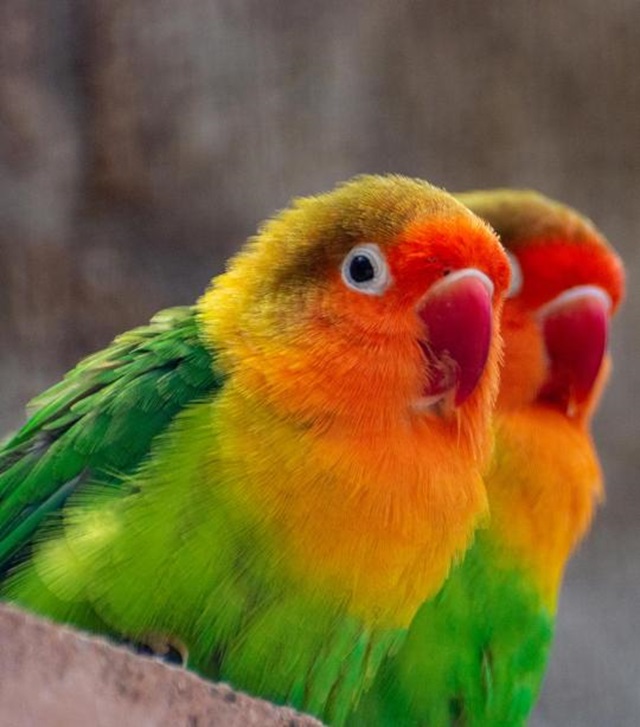
What Is a Lovebird? Understanding Your New Pet
Lovebirds are small, social birds originating from Africa. Their vibrant colors and lively behavior make them a favorite among bird enthusiasts. Despite their small size, lovebirds are highly intelligent and affectionate. However, they need plenty of attention and care to stay happy.
The History and Origins of Lovebirds
Lovebirds were first discovered in Africa and Madagascar. There are nine species, all known for their strong pair bonds, which is how they got their name. In the wild, lovebirds live in flocks, and they naturally crave social interaction, whether it’s with another lovebird or their human caretaker.
Types of Lovebirds: Which Species Is Right for You?
The most common types of lovebirds include:
- Peach-faced Lovebird
- Fischer’s Lovebird
- Masked Lovebird
Each species has its own personality traits, but all are similar in terms of care requirements. The Peach-faced lovebird is often considered the most popular choice for first-time owners because of its friendly demeanor and wide availability.
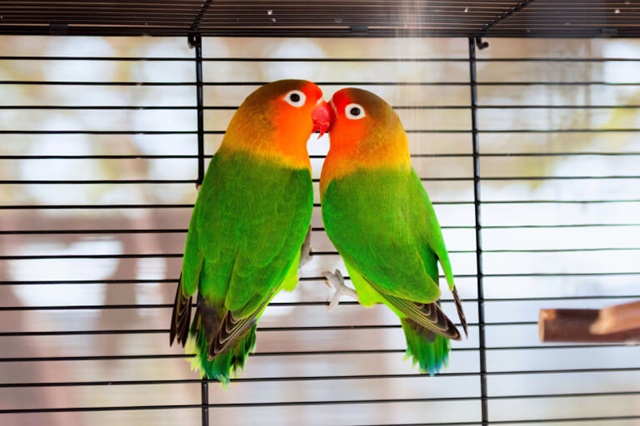
Setting Up the Perfect Lovebird Environment
Your lovebird’s environment is crucial to their well-being. The right cage and accessories will help them feel safe and comfortable.
Best Lovebird Cage Setup for Comfort and Safety
Lovebirds are active birds that love to climb, fly, and play. A cage that allows them to move freely is essential. The ideal cage should be:
- At least 18x18x24 inches in size for a single lovebird.
- Made of sturdy metal bars spaced no wider than ½ inch apart to prevent escape or injury.
Must-Have Accessories for Your Lovebird’s Cage
- Perches: Provide multiple perches at different heights to encourage climbing.
- Food and Water Bowls: Stainless steel or ceramic dishes are recommended for easy cleaning.
- Bird Toys: Lovebirds are curious and need mental stimulation, so offer a variety of toys like swings, ladders, and chew toys.
Tips for Cage Placement and Maintenance
- Place the cage in a well-lit, draft-free area where your lovebird can see the household’s activity.
- Clean the cage regularly, changing the paper or lining at least twice a week, and sanitize perches and toys.
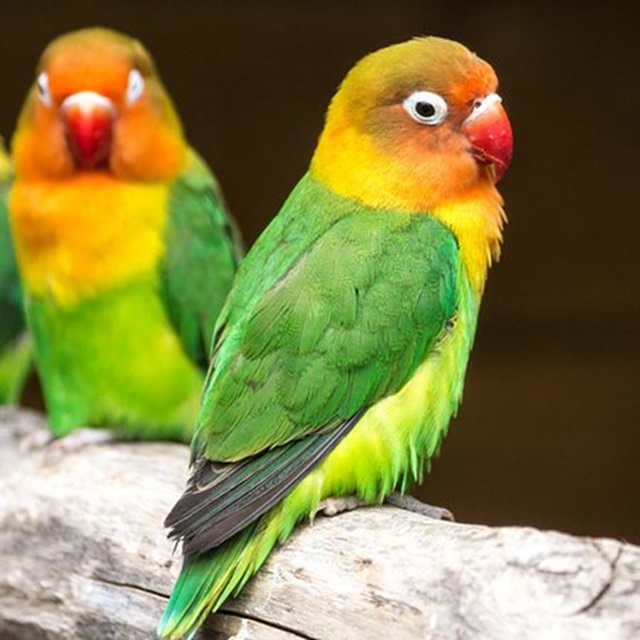
Feeding Your Lovebird
Providing a balanced diet is crucial for your lovebird’s health.
What Do Lovebirds Eat? Essential Nutrition Tips
A healthy lovebird diet includes a mix of seeds, pellets, and fresh fruits and vegetables. While seeds are a natural part of their diet, pellets should make up the majority, as seeds alone lack essential nutrients.
Best Types of Food for Lovebirds (Seeds, Pellets, Fresh)
- Pellets: Zupreem and Lafeber’s pellets are highly recommended.
- Fresh Fruits & Vegetables: Apples, carrots, spinach, and kale are great additions to their diet.
- Seeds: Use a high-quality seed mix, but offer it in moderation to avoid obesity.
Foods to Avoid: Keep Your Lovebird Safe
Certain foods can be harmful to lovebirds. Avoid feeding them:
- Avocado
- Chocolate
- Caffeine
- Onions and garlic
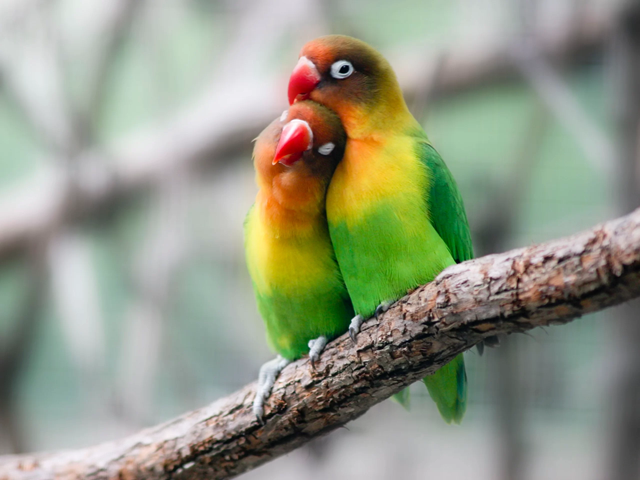
Socializing and Playing with Your Lovebird
Lovebirds thrive on interaction, whether with their owners or a mate.
The Importance of Bonding with Your Lovebird
To build trust, spend time near your lovebird’s cage, talking softly and offering treats. Gradually introduce your hand to the cage and let the bird come to you. Over time, your lovebird will associate you with safety and affection.
Best Lovebird Toys for Mental Stimulation
Lovebirds love to chew and explore. Offer toys that challenge their intelligence, such as:
- Puzzle toys that dispense treats.
- Chew toys made of natural wood.
- Swings and ropes to encourage climbing and activity.
Common Lovebird Behaviors and What They Mean
- Chirping and Singing: A happy, content bird will often chirp throughout the day.
- Biting or Aggression: This could be a sign of fear or territorial behavior, especially if they feel threatened.
- Preening: This is a good sign, as it shows your lovebird is comfortable and maintaining its feathers.
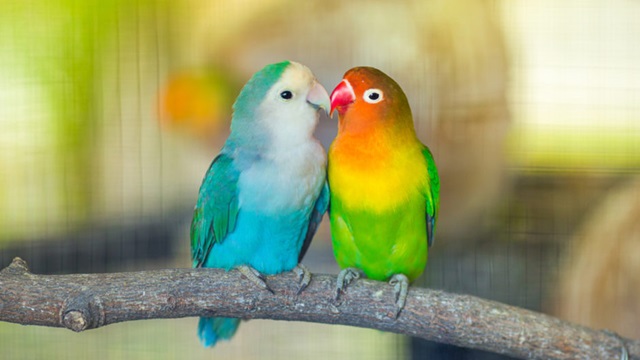
Keeping Your Lovebird Healthy
Lovebirds are generally hardy birds, but like all pets, they can develop health problems. It’s important to be aware of the signs of illness and how to prevent them.
Common Lovebird Health Issues and How to Prevent Them
- Respiratory Problems: Caused by drafts or poor air quality. Ensure your lovebird’s cage is in a ventilated area, but away from cold drafts.
- Feather Plucking: Often a result of boredom or stress. Ensure your bird has enough toys and attention.
- Nutritional Deficiencies: A poor diet can lead to issues like beak deformities or dull feathers. Always provide a varied diet rich in vitamins.
How to Find a Good Avian Vet
Not all vets specialize in birds, so it’s essential to find an avian vet who understands the unique needs of lovebirds. Ask for recommendations from local bird clubs or pet stores, or check online directories for certified avian veterinarians.
Signs Your Lovebird Needs Medical Attention
- Unusual behavior such as lethargy or loss of appetite.
- Changes in droppings (diarrhea or unusual color).
- Labored breathing or excessive sneezing.
Breeding Lovebirds: What You Need to Know
Breeding lovebirds can be rewarding but also requires special attention.
When and How to Breed Lovebirds Successfully
Lovebirds typically reach sexual maturity at about 10 months. To breed them successfully, provide:
- A quiet, secure space for the breeding pair.
- A proper nesting box made of wood, placed high in the cage for privacy.
Setting Up a Nest Box for Breeding
The nest box should be at least 12×12 inches in size and filled with soft materials like shredded paper or coconut fiber. Make sure the box is positioned securely to prevent accidents.
Caring for Baby Lovebirds
Once the eggs hatch, both parents will care for the chicks. Ensure they have plenty of food and water to sustain the additional feeding. You can handle the chicks gently to tame them, but avoid over-handling them while they’re very young.
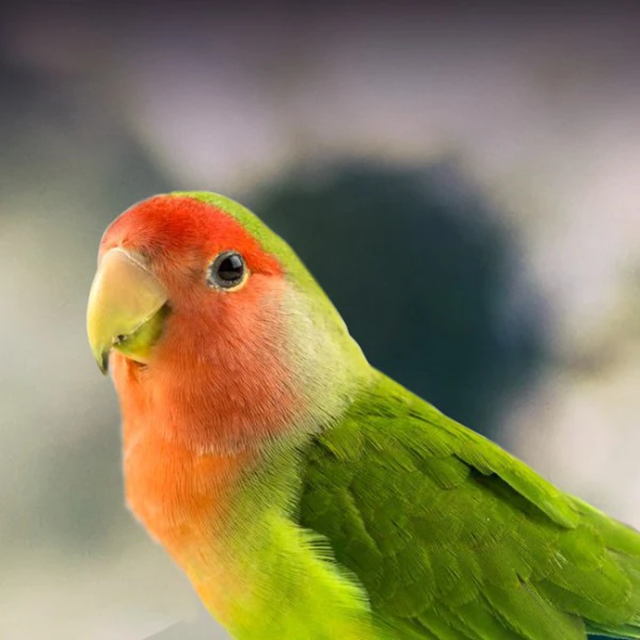
Frequently Asked Questions (FAQs)
- What size cage does a lovebird need? A cage should be at least 18x18x24 inches for a single bird, with plenty of space for toys and perches.
- Can lovebirds eat fruits and vegetables? Yes, lovebirds love fresh fruits and vegetables, but avoid toxic foods like avocado and chocolate.
- How do I know if my lovebird is happy? Happy lovebirds will be active, chirp often, and preen their feathers regularly. They’ll also be curious and interactive with their environment.
- What should I do if my lovebird stops eating? If your lovebird isn’t eating, it could be sick or stressed. Check their environment, and if the issue persists, visit an avian vet immediately.
Final Thoughts
Caring for a lovebird is both rewarding and enjoyable. With the right diet, environment, and attention, your lovebird can thrive and form a lasting bond with you. Remember, a happy lovebird is an active, social bird that enjoys interaction and stimulation. Keep them healthy with a balanced diet, a spacious cage, and plenty of love.
